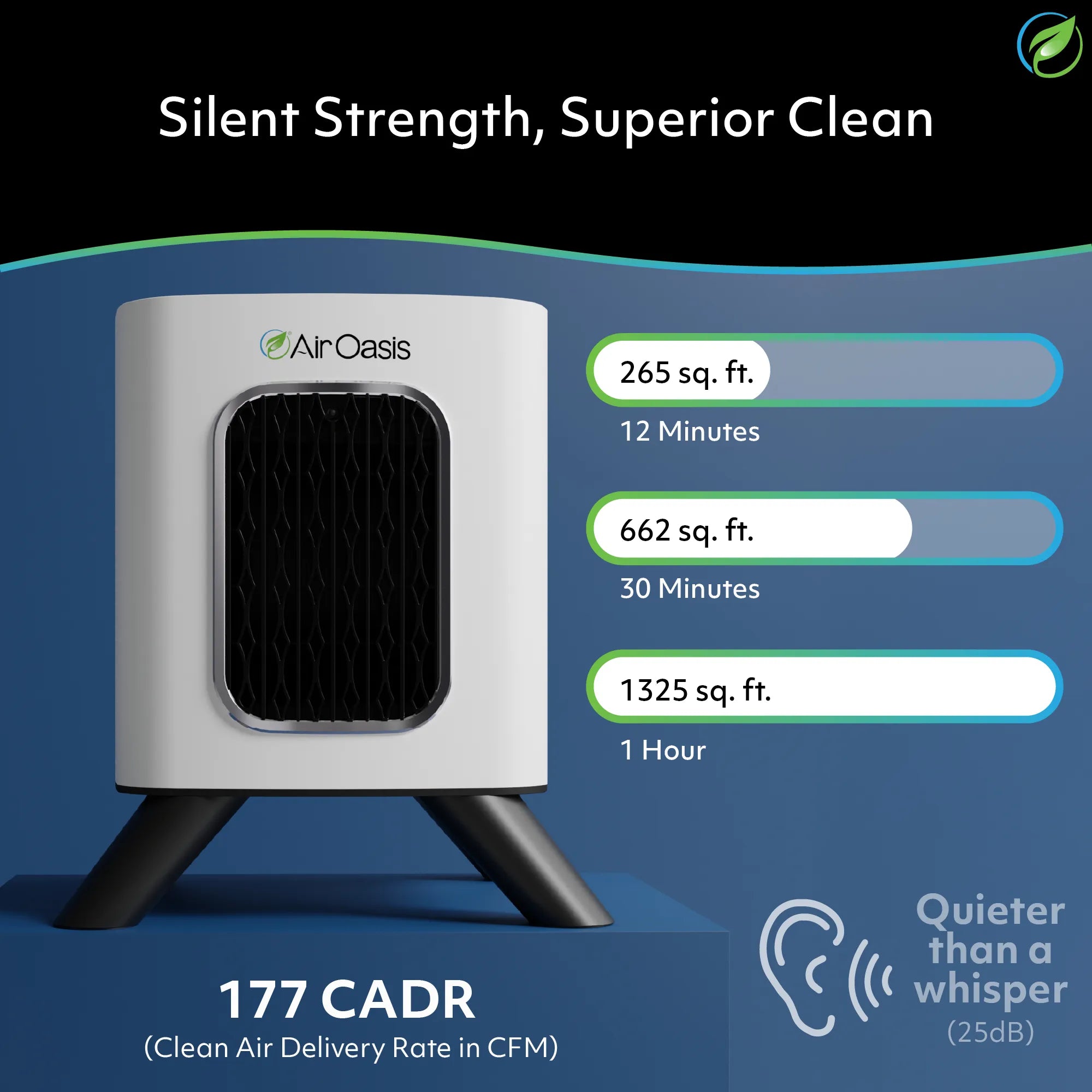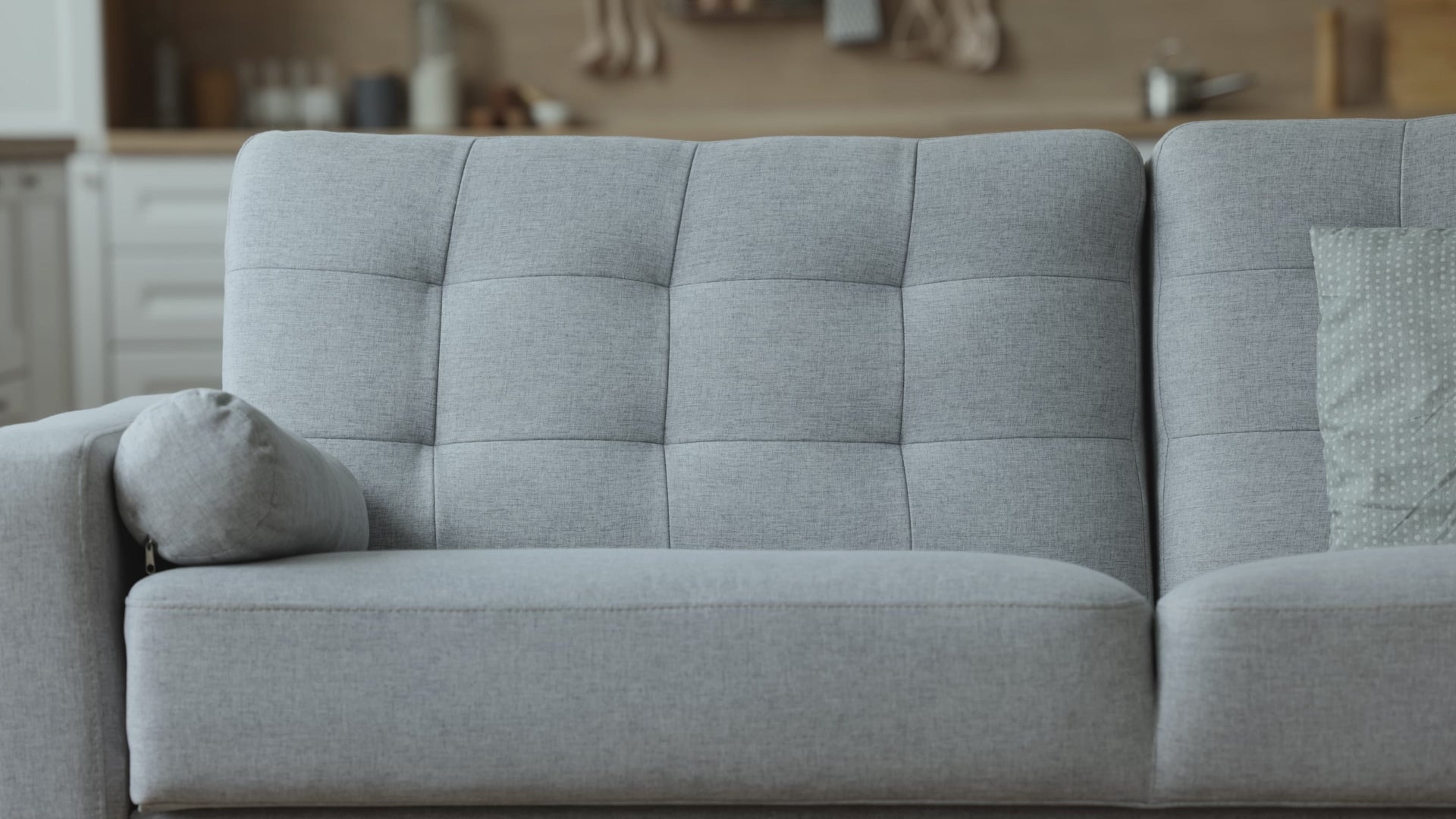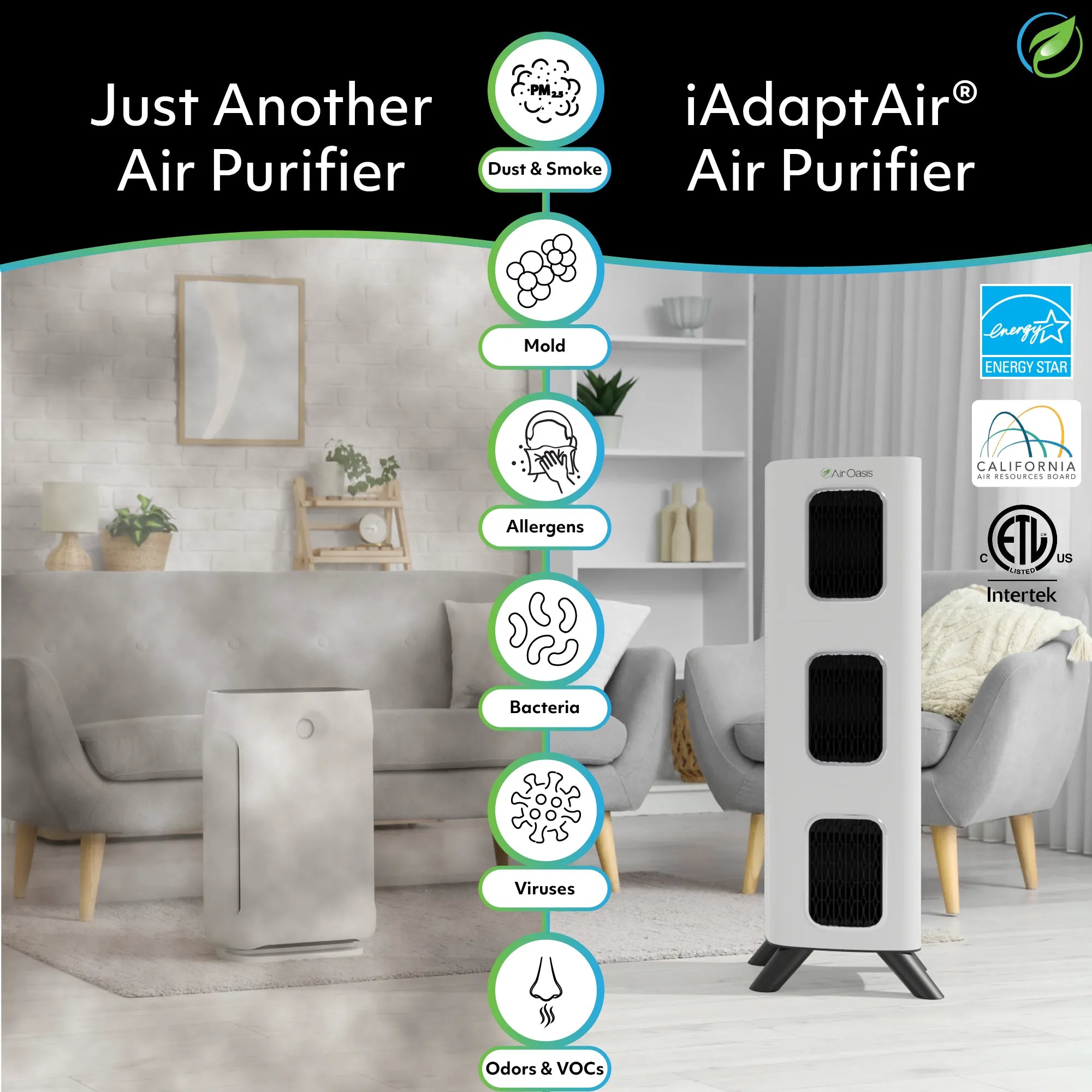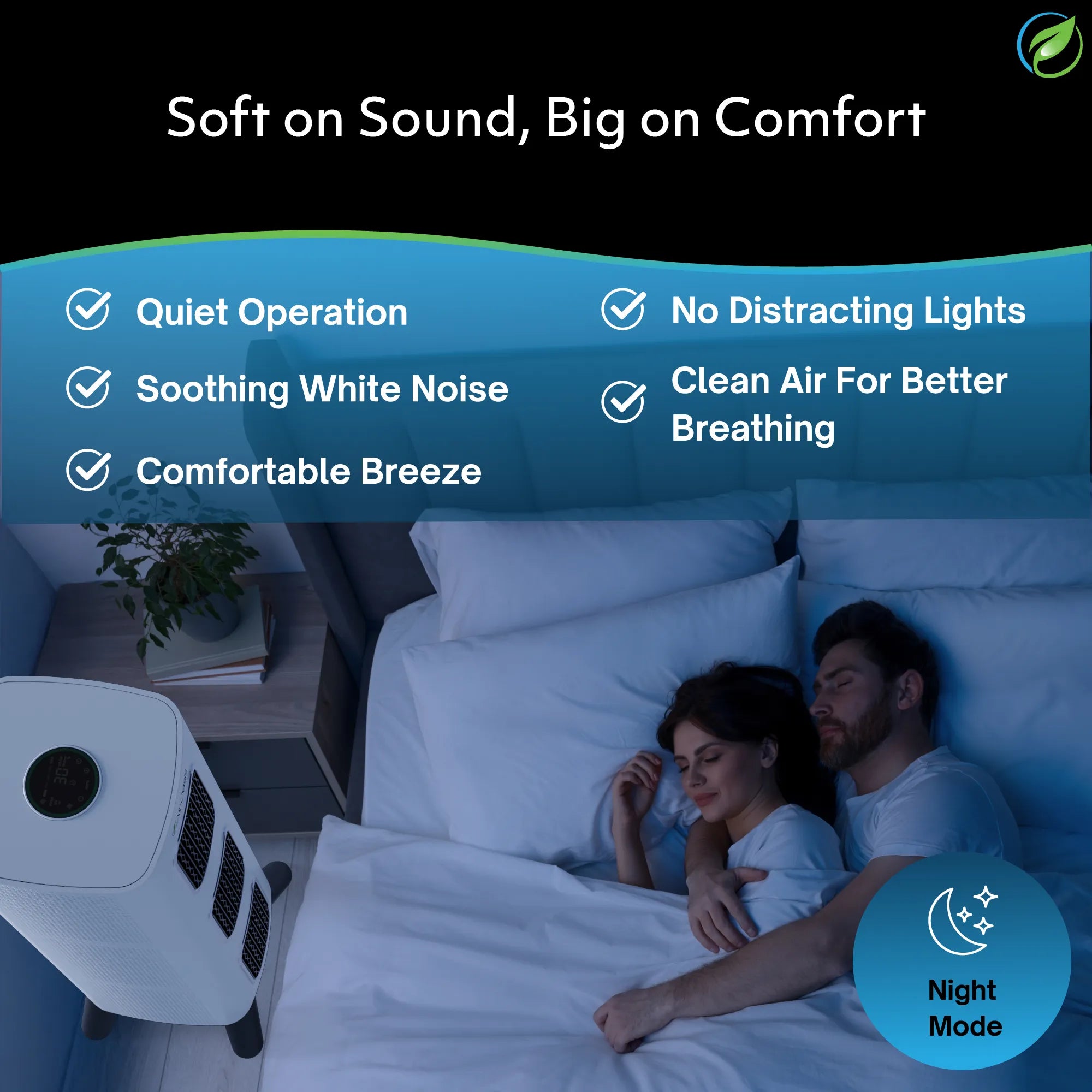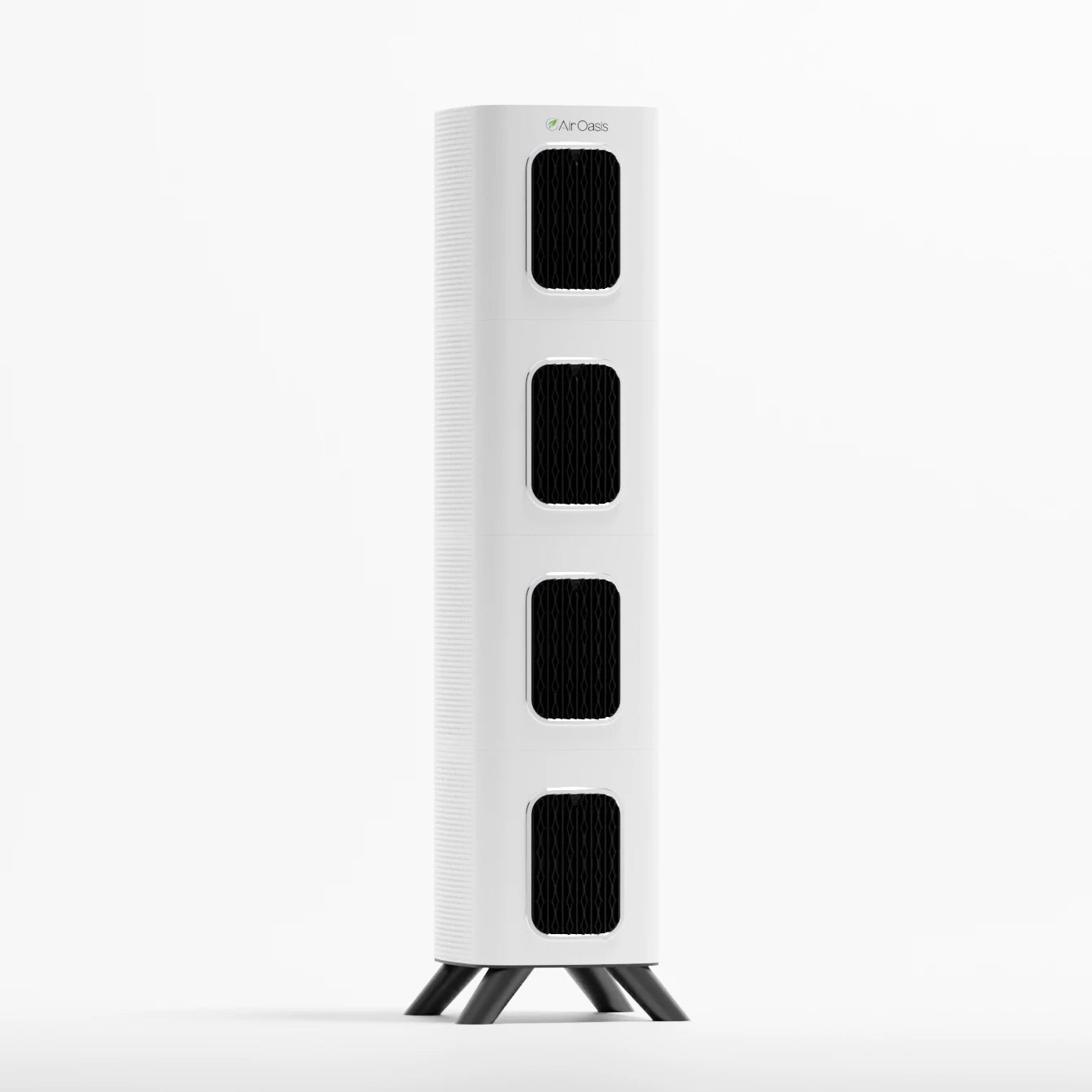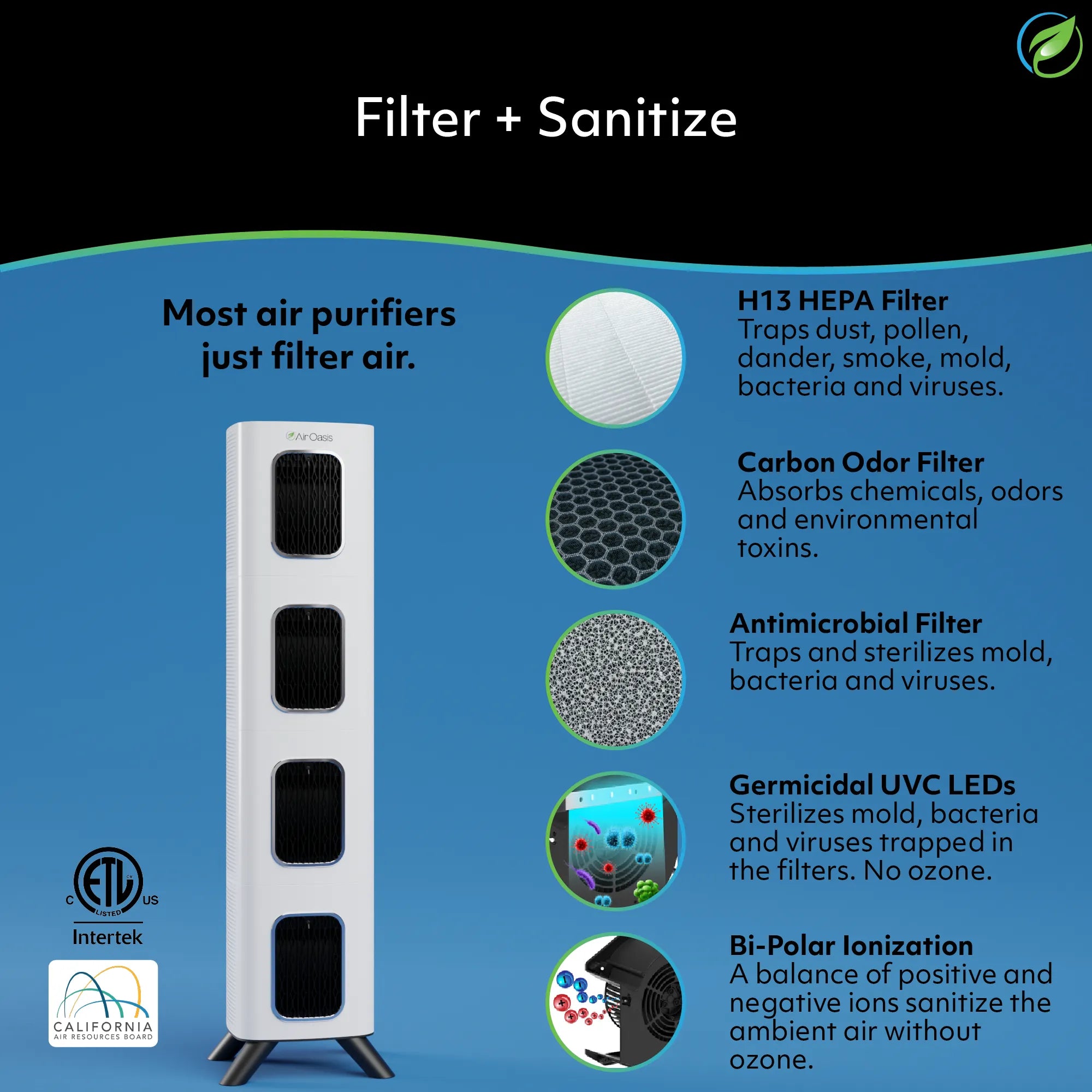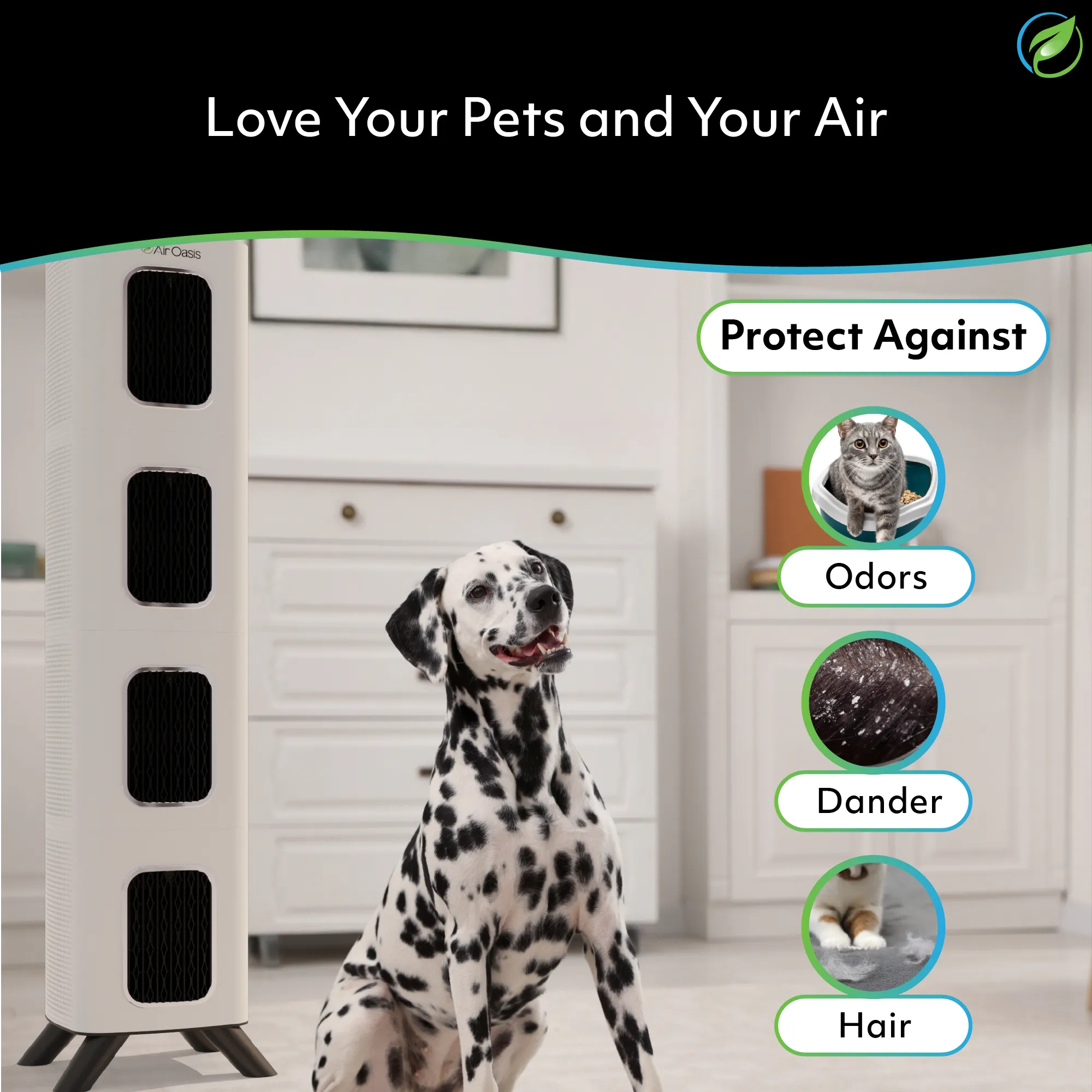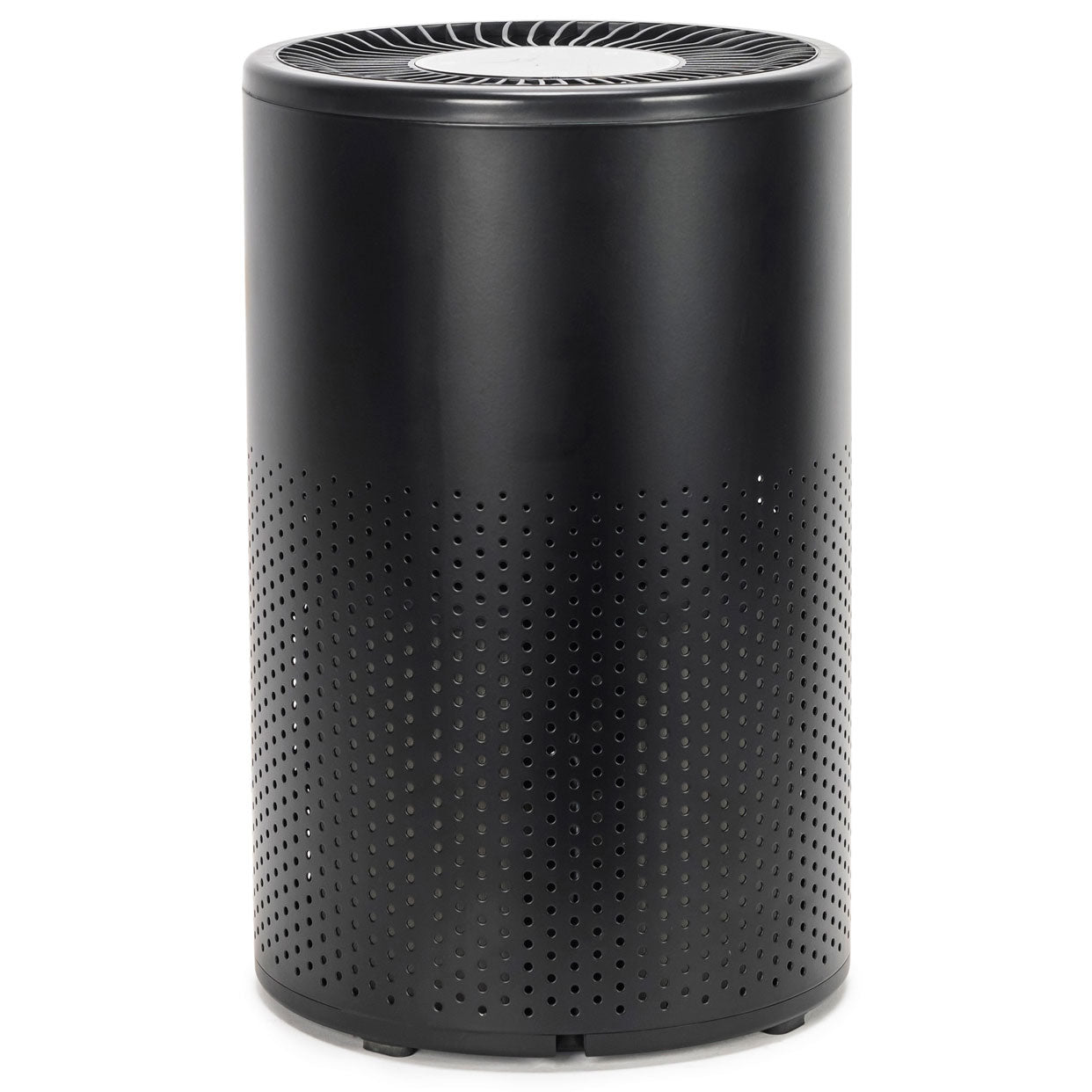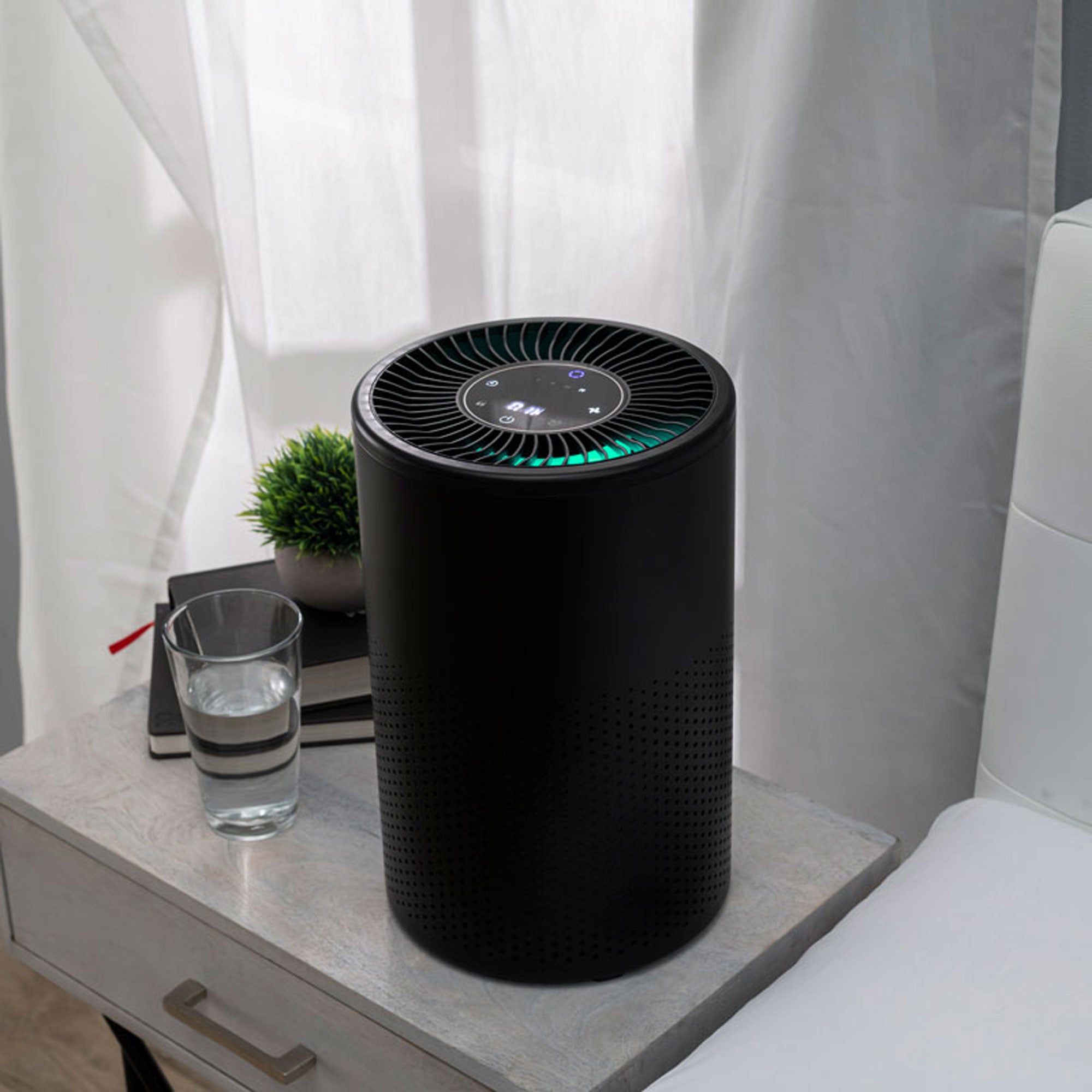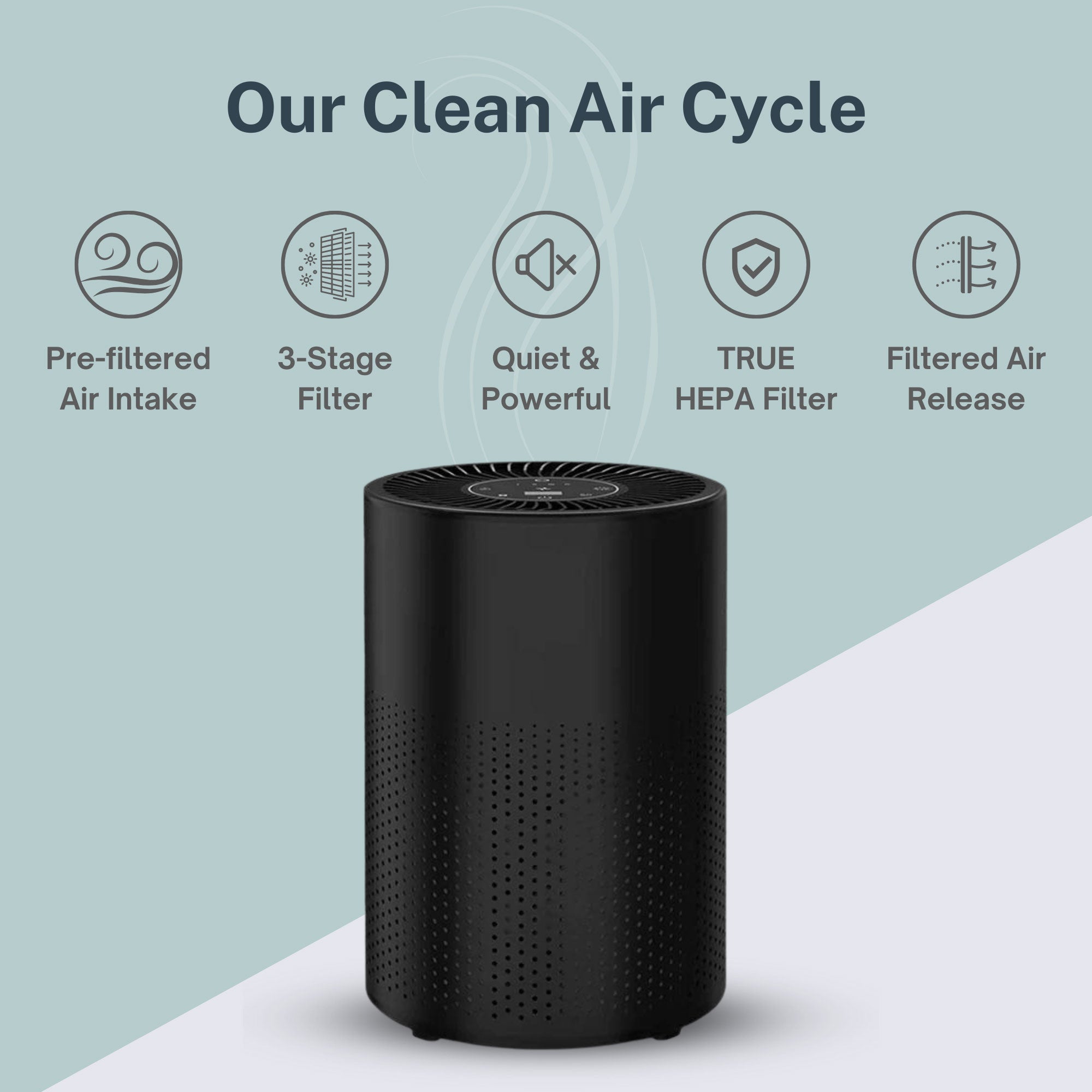We know air purifiers clean the air—it’s in the name—but can they dry the air, too?
This is a common question and often leads to others about the relationship and impact of air purifiers on indoor humidity levels.
So, do air purifiers dry air?
No, they don’t.
Why is this the case?
Today, we’ll explore the science behind air purifiers and humidity to separate fact from fiction and help you make informed decisions about maintaining optimal air quality in your home.
Do Air Purifiers Dry The Air?
No, air purifiers don’t dry the air out. Functionally, this is because air purifiers are designed to clean the air by removing harmful contaminants, like allergens and mold, not to alter its moisture content.
To dry the air, an air purifier would need to have mechanisms in place that alter the air’s moisture levels, namely by removing water vapor.
This leads us to humidity.
Can Air Purifiers Impact Relative and Absolute Humidity?
The short answer is no; air purifiers generally do not significantly impact either relative or absolute humidity in a home. Here's why:
Relative humidity (RH) is the amount of water vapor in the air compared to the maximum amount it can hold at a given temperature. For example, 50% RH means the air contains half of the moisture it can potentially hold.
Absolute humidity, on the other hand, is the actual amount of water vapor in a given volume of air, usually expressed in grams per cubic meter (g/m³). Unlike relative humidity, absolute humidity doesn't change with temperature.
Air purifiers don't significantly affect either because:
- No Moisture Removal Mechanism: Air purifiers lack the condensation or absorption mechanisms that dehumidifiers use to extract water vapor from the air.
- Minimal Effect on Absolute Humidity: Studies have shown that standard HEPA filters have no measurable effect on the absolute humidity of a room.
- Negligible Impact on Temperature: Air purifiers don't alter the air temperature, which would be necessary to change the relative humidity without changing the absolute humidity.
So, while air purifiers are excellent for removing pollutants and improving air quality, they are not designed to and do not effectively control humidity levels in your home. If you're concerned about humidity, you'd need to use a separate device like a humidifier or dehumidifier in conjunction with your air purifier.
Why Air Purifiers Don't Make Air Dry
Air purifiers are designed with one primary purpose: to clean the air by removing contaminants and pollutants.
Unlike dehumidifiers or humidifiers, which directly interact with moisture levels, air purifiers focus solely on filtering unwanted particles and gases.
Here's how air purifiers work:
- Air Intake: The device draws in air from the surrounding environment.
- Filtration: As air passes through the purifier, it goes through one or more filters—ours go through five.
- Air Output: Clean, filtered air is released back into the room.
Different types of air purifiers use specific mechanisms to clean the air:
- HEPA Filters: These mechanical filters trap particles as small as 0.3 microns, including dust, pollen, pet dander, bacteria, and mold.
- Activated Carbon Filters: These adsorb gases, VOCs, and odors.
- Ionizers: They release charged particles that attach to contaminants, causing them to fall out of the air.
Importantly, none of these mechanisms interact significantly with water vapor in the air. HEPA and activated carbon filters physically trap pollutants without affecting humidity levels. Even ionizers, which alter the electrical charge of particles, don't impact water molecules enough to change overall humidity.
This is fundamentally different from how humidifiers and dehumidifiers work. Humidifiers add moisture to the air, while dehumidifiers remove it.
While some users might perceive increased dryness when using an air purifier, this is likely due to improved air circulation rather than actual moisture removal. The movement of air can increase evaporation from the skin, creating a sensation of dryness without actually changing the room's humidity.
Carbon Filters and Humidity
Out of all the cleaning mechanisms in an air purification system, activated carbon filters have a relationship with humidity, which can impact their effectiveness:
- Adsorption Properties: Activated carbon is slightly hydrophobic but contains some oxygen, which can attract a small amount of water vapor.
- Adsorption Effectiveness: High humidity can reduce the adsorption capacity of activated carbon filters. As water molecules occupy some of the binding sites on the carbon surface, other chemicals have less space to bond.
- Bulk Density Changes: In high-humidity environments, activated carbon can adsorb water, leading to increased viscosity between particles and a decrease in bulk density. Conversely, in low humidity conditions, the bulk density of activated carbon may increase.
- Surface Area Effects: As humidity rises, water molecules on the activated carbon surface increase, potentially reducing the surface area available for the adsorption of other substances.
While these interactions exist, it's important to note that the impact is typically minimal in a home setting. The effects are more noticeable in industrial applications or environments with extreme humidity levels.
What Actually Causes Dry Air in Homes?
If you’re suffering from dry indoor air and the many unpleasant side effects, like dry eyes and flaky skin, here are some likely culprits (that aren’t your air purifier).
- Cold Weather: Cold air holds less moisture than warm air, leading to lower humidity levels indoors during winter months.
- Heating Systems: When we heat our homes in winter, the warm air can hold more moisture, but if no additional moisture is added, the relative humidity drops, making the air feel dry.
- Poor Insulation: Gaps in insulation can allow dry, cold air from outside to enter, reducing indoor humidity levels.
- Lack of Ventilation: Keeping homes tightly sealed in winter can prevent moisture from entering, contributing to dry indoor air.
If you're experiencing dry air in your home, it's likely due to these factors rather than your air purifier. To address dry air, consider using a humidifier, which adds moisture to the air.
Reasons The Air Feels Dry When Running an Air Purifier
While air purifiers don't remove moisture from the air, there are several reasons why you might perceive the air as drier when using one:
Weather and Climate
In dry, arid environments or during winter months, the air naturally contains less moisture. Cold air holds less humidity than warm air, and when it's heated indoors, the relative humidity drops further. An air purifier circulating this already-dry air can exacerbate the feeling of dryness.
Humidity Imbalance
The Environmental Protection Agency (EPA) recommends indoor humidity levels between 30% and 50% to prevent mold growth while maintaining comfort. If your home's humidity falls below this range, air circulation from an air purifier can make the air feel even drier.
Increased Air Circulation
Air purifiers create air movement as they intake and expel air. This circulation can increase evaporation from your skin and mucous membranes, leading to a sensation of dryness.
The evaporative cooling effect can make you feel cooler, even though the room temperature hasn't changed.
Position of the Air Purifier
Where you put your air purifier really matters!
If you're sitting directly in front of the air purifier, the constant airflow can cause increased evaporation from your skin, making the air feel drier. We often associate moving air with coolness and dryness, even though air purifiers don't actually cool or dehumidify the air.
Size of the Air Purifier
Using an air purifier that's too large for the space can increase air circulation more than necessary, potentially enhancing the perception of dryness. A unit that's too powerful for the room size may circulate air more vigorously, leading to increased evaporation and a stronger sensation of dryness.
To mitigate these effects, consider adjusting the position of your air purifier, using a unit appropriately sized for your room, and monitoring your indoor humidity levels. If necessary, you might want to use a humidifier in conjunction with your air purifier to maintain optimal humidity levels.
How To Maintain Optimal Indoor Humidity When You're Using An Air Purifier
Maintaining optimal indoor humidity levels is crucial for comfort and health, even when using an air purifier. Here are some effective strategies to manage humidity while running your air purifier:
Check Your Home’s Humidity Levels
Regularly monitor your indoor humidity levels using a hygrometer. If you don't have a hygrometer, you can use the simple ice cube method:
- Place 2-3 ice cubes in a glass of water.
- Wait 4 minutes.
- Check for condensation on the outside of the glass.
If condensation forms, your humidity might be too high. If there's no condensation at all, your humidity might be too low.
Adjust Your Humidity With A Humidifier or Dehumidifier
If your humidity levels are outside the optimal range, consider using supplementary devices:
- For low humidity (below 30% RH), use a humidifier to add moisture to the air.
- For high humidity (above 50% RH), use a dehumidifier to remove excess moisture.
Remember to clean and maintain these devices regularly to prevent mold growth and ensure efficient operation.
Check Your Home’s Ventilation and Insulation
Your home's structure plays a significant role in humidity control:
- Improve ventilation by using exhaust fans in bathrooms and kitchens to remove excess moisture.
- Ensure proper insulation to maintain consistent temperatures and reduce condensation.
- Keep interior doors open to allow air circulation and prevent humidity buildup in specific areas.
- Address any leaks or water damage promptly to prevent excess moisture accumulation.
Ensure Your Air Purifier is Operating Correctly
While air purifiers don't directly affect humidity levels, proper maintenance ensures they function optimally alongside your humidity control efforts:
- Regularly clean the exterior of your air purifier.
- Check and clean or replace filters as recommended by the manufacturer.
- Ensure proper placement of your air purifier, allowing enough space for air circulation.
By implementing these strategies, you can maintain optimal indoor humidity levels while benefiting from the air-cleaning capabilities of your air purifier. Remember, the key is to create a balanced environment that promotes both clean air and comfortable humidity levels.
Achieve Comfortable, Clean Air with an Air Purifier
Air purifiers play a crucial role in maintaining clean, healthy indoor air without significantly impacting humidity levels.
As we've explored, these devices are designed to remove contaminants from the air, not to alter its moisture content.
While some users might perceive increased dryness when using an air purifier, this is typically due to improved air circulation rather than actual moisture removal.
At Air Oasis, we're committed to helping you achieve the best possible indoor air quality. Our range of advanced air purifiers is designed to effectively remove pollutants, allergens, and odors from your home without impacting humidity levels.
Whether you're dealing with dry winter air or humid summer conditions, an Air Oasis purifier can work alongside your humidity management efforts to create a healthier, more comfortable living space.
Ready to experience the difference of truly clean air? Explore our selection of air purifiers at Air Oasis and take the first step towards breathing easier in your home.






